There are apparently two separate alphabetical schemes for classifying planets amd planetoids:
1.
Size:
The Enterprise encountered an asteroid belt in the
Gamma Canaris region of approximately
7,000 bodies. Their sizes ranged from types
"A" to "N".
"Metamorphosis" [TOS]
2.
Atmosphere:
A description of a body's atmosphere as it relates
to habitability, and / or suitability for
humanoid life...
Approximately 34% of the bodies in the Gamma Canaris
asteroid belt had atmospherian types
"H" to "M." (This would appear to be the
Earthman-breathable range of the spectrum of
atmospheric types. When we encounter
planetary types in Star Trek, it must usually be referring
to this second classification scheme).
"Metamorphosis" [TOS]
It is also likely that this classification is not based on the
English alphabet but instead on the initial letters
of the Vulcan words to describe the planet's
atmospheres. For example, the Vulcan word "Min-shara"
(which apparently translates to something like
"suitable for humanoid life") has probably been shortened
to the class letter
"M".
"Strange New World" [ENT]
Other clues that the classification is not based
on the English alphabet include:
The fact that letters appear in the classification
system which are not even in the English alphabet.
(Norcadia Prime is a class Theta planet).
Even though the order of letters from H to M in the
English alphabet includes J, J cannot be included
in the habitable range of planets. J refers to
gas giants, and gas giants
cannot reasonably be thought to
be habitable.
On the other hand,
even though in English D doesn't fall between H and M, Class D planets
are habitable.
(If we arrange the sequence from the least habitable
worlds to the most habitable, I'd guess that the
sequence must go something like J T Y C N H D K L Th
M)
It also seems that many of these classes are further subdivided into
numbered classes indicating what
type of moon or gas giant, etc that they are.
"Sleeping Dogs" [ENT], "In the Flesh" [VOY]
Class C:
| Picture (if available) |
Description | Source |
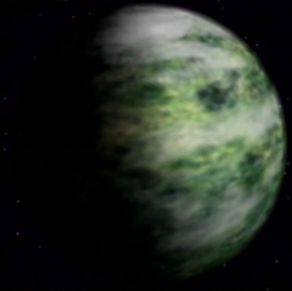 |
8th planet in Theta 116 solar system (Theta Eight) nitrogen, methane, liquid neon, ammonia storms; winds up to 312 m/s; Geordi claims the surface temperature is minus 291 degrees Celsius, but since minus 273 is absolute zero this seems quite impossible... (Perhaps in the Star Trek future there is another temperature scale in use that is abbreviated C and Geordi mistook it for Celsius as he read it from the display?) -- from the Okudagram: Class C Transjovian. Estimated Age = 2x10E10 solar years Rotation period = 15.3 hrs Revolution period = 832 S Days (standard days?) Mean Surface Temp = -291 deg C |
"The Royale" [TNG] |
Class D:
| Picture (if available) |
Description | Source |
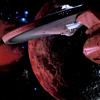 |
Regula -"a few unremarkable ores... a great rock in space" |
"The Wrath of Khan" [ST2] |
 |
A system with a type-3 sun and three planets is located inside of a gravity "sinkhole", out of phase with normal space. One of the planets is class D. It is described as "hot, arid, rocky". |
"Gravity" [VOY] |
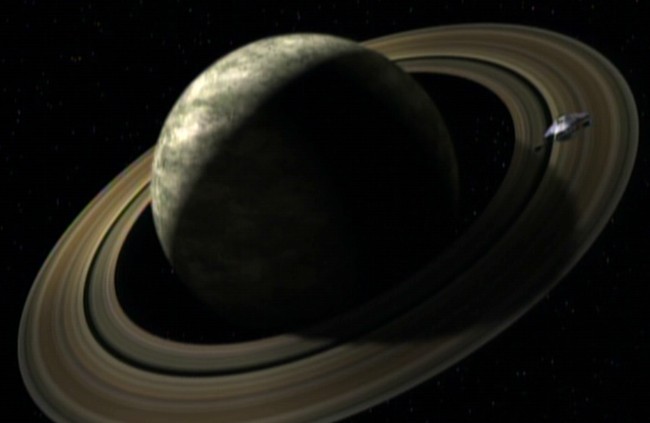 |
A ringed planet. Some of the asteroids comprising the rings were large enough to have class M environments inside them. |
"Emanations" [VOY] |
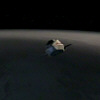 |
Weytahn (Paan Mokar) - before terraforming, it was class D. "not much larger than the moon." |
"Cease Fire" [ENT] |
Class H:
| Picture (if available) |
Description | Source |
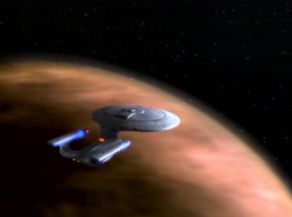 |
Tau Cygna V - "bathed in deadly radiation but suitable
for colonization by the Sheliak" under the Treaty of Armens, Section 501, paragraph 716, subparagraph 5 which states, "unwanted humans on H-class planets may be removed at the discretion of the Sheliak Corporate." . |
"Ensigns of Command" [TNG] |
| No Picture Available |
"moon - oxygen/argon atmosphere" | "Scorpion, Part 2" [VOY] |
Class J (Gas Giant):
| Picture (if available) |
Description | Source |
 |
"gaseous giant (With free fluorine in the atmosphere, at least in some spots.); two moons." |
"Starship Down" [DS9] |
 |
J(6):
To keep a Malon vessel from stealing it, Voyager steered its multispatial probe (equipped with immersion shield technology) into the atmosphere of a class 6 gas giant that they had just finished surveying. It remained intact and was repairable, but got stuck in a layer of liquid hydrogen and methane about 10,000 km below the outer atmosphere and no longer responded to Voyager's remote commands. |
"Extreme Risk" [VOY] |
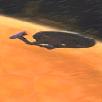 |
J(6)
or J(7): Archer thought the gas giant which contained the Suliban Helix within its atmosphere was a class 6 or 7. It turned out to be a class 7. It had a radiation belt which dissipated warp- trails going through it. Enterprise was able to compensate for it by recalibrating their sensor array to a narrow band, short to mid-range, and measuring particle density in the thermosphere. |
"Broken Bow" [ENT] |
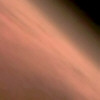 |
J(9):
Enterprise found a class 9 gas giant and decided to invesigate it. There are no class 9 gas giants in Earth's solar system. The Klingon term for this type of gas giant is Q'tahl-class. |
"Sleeping Dogs" [ENT] |
Class K:
| Picture (if available) |
Description | Source |
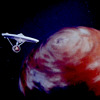 |
Mudd - "adaptable for humanoid use with pressure domes" | "I, Mudd" [TOS] |
Class L:
| Picture (if available) |
Description | Source |
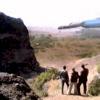 |
Briori planet, now named New Earth
- "oxygen/argon atmosphere; trinimbic interference in upper atmosphere" |
"The 37's" [VOY] |
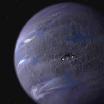 |
Odo and Quark, after the sabotage of their runabout, were forced down on a Class-L planet. It was described as "cold, barely habitable". |
"The Ascent" [DS9] |
 |
"fourth planet in system; surrounded by exogenic field with high gravimetric stresses and composed of subspace metreon radiation, generated by unstable elements in the planet's core; barely breathable atmosphere, excess of carbon dioxide" |
"The Sound of Her Voice" [DS9] |
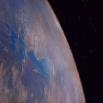 |
Indri VIII - No evidence of intelligent life or any animals was detected there, but the planet was covered with deciduous vegetation. |
"The Chase" [TNG] |
| No Picture Available |
It is a theoretical possibility that Class L planetoids
contain hot water springs, which could sustain a man for several weeks (but not for a whole year). |
"Riddles" [VOY] |
 |
In an alternate timeline, Voyager crashed on an unnamed Class L planet in the Tekara sector. |
"Timeless" [VOY] |
| 4th planet in a type F star system. | "Muse" [VOY] | |
| No Picture Available |
L-class moon in the next system. Away team could survive there for weeks if they had to. | "Good Shepard" [VOY] |
| No Picture Available |
breathable atmosphere | "Bounty" [ENT] |
Class M (Min-shara class):
| Picture (if available) |
Description | Source |
 |
oxygen/nitrogen atmosphere, earth-like conditions. . |
[All episodes] . |
Class N:
| Picture (if available) |
Description | Source |
|
N(2): When
Data is
going through the computer looking for explosives he comes across the
following: 34-5580 TRI-NICKOLAS POWDER Non-oxidizing chemical explosive used in class-N(2) planetary environments for engineering applications. This substance is unstable in oxygen atmospheres and must be handled in accordance with SFRA 2884.3 safety regulations. |
"Night Terrors" [TNG] |
Class T:
| Picture (if available) |
Description | Source |
 |
ringed gas giant; surrounded by orbital rings, one of
which was radiogenic. The ring was ignited by the Delta Flyer. |
"Good Shepherd" [VOY] |
Class Theta:
| Picture (if available) |
Description | Source |
 |
Norcadia Prime, Planetoid (Neighbouring the Pendari System) population of 260 million; binary suns. inhabited by Borg designated Species 689; located in Spatial Grid 2369. |
"Tsunkatse" [VOY] "Collective" [VOY] "Ashes to Ashes" [VOY] |
Class Y (Demon class):
| Picture (if available) |
Description | Source |
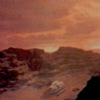 |
"toxic atmosphere; thermeonic radiation which makes it dangerous for a vessel to enter orbit; surface temperatures over 500K; dense pockets of deuterium underneath surface." |
"Demon" [VOY] |
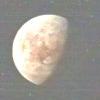 |
Ha'Dara (Bajoran for "home of light") - "toxic atmosphere, sulfuric deserts, no trees, no life at all" |
"Flesh and Blood" [VOY] |
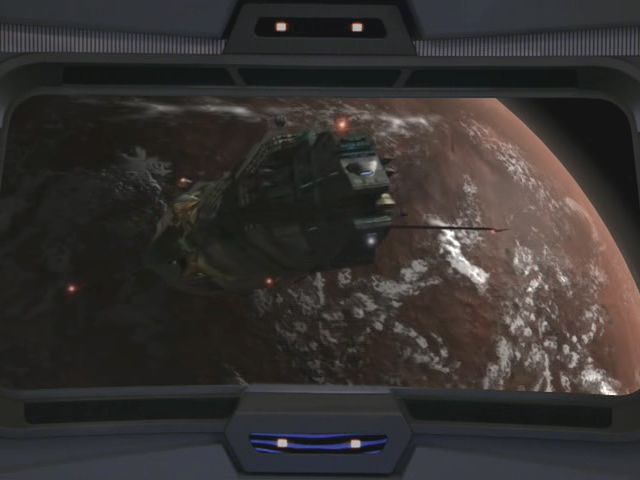 |
planet claimed by Ord marine mining treaty. | "Course, Oblivion" [VOY] |
Class 3 Moon:
| Picture (if available) |
Description | Source |
| No Picture Available |
An unnamed moon which Voyager hid behind to avoid detection. It is near Terra-sphere 8, a training facility for members of species 8472 attempting to infiltrate Starfleet. |
"In the Flesh" [VOY] |
----------------------------------------------------